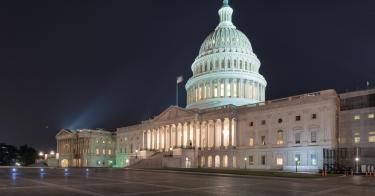For decades, the federal bureaucracy has grown unchecked. New agencies have sprung up, but outmoded offices have rarely been dismantled. Today, the federal bureaucracy is so large, experts can’t even agree on how many agencies there are.
The Government Accountability Office estimates the federal government taxpayers could save tens of billions of dollars just by eliminating bureaucratic overlap and duplication.
Last summer, the Office of Management and Budget (OMB) advanced a plan that would go a long way in that regard. Its 32 specific recommendations span the gamut from the bold (combining the Department of Labor and Education, for instance), to the granular (consolidating financial literacy programs).
The vast majority of these proposals will require some action from Congress but, thus far, Congress has not moved. Perhaps inaction was to be expected, giving lawmakers’ preoccupation with a contentious election. But with the electoral dust settled and divided government the order of the day, bureaucratic reorganization — a policy area that seldom ignites passion — may be a winner for both sides of the aisle.
For Republicans, chipping away at big government and reducing expenditures should hold obvious appeal. And Democratic members of Congress looking to burnish their pragmatist bona fides may find this an attractive place to start. After all, these savings can be realized without touching the social welfare programs sacrosanct to many on the left.
But significant reorganization of the executive branch is long proved elusive. Nearly every modern president has taken a run at it, but the results have been underwhelming.
President Bill Clinton’s attempt to “reinvent government” led to streamlined grant processes and electronic tax filing, but didn’t reduce the number of federal agencies.
After the Sept. 11 attacks, President George W. Bush sought to transform the “confusing patchwork of government activities into a single department whose primary mission is to protect our homeland.” Yet we still have 17 separate intelligence agencies.
President Barack Obama proposed consolidating six closely related agencies dealing with trade and commerce. It went nowhere in Congress.
The OMB plan is not doomed to die. But like previous reform efforts, it is bound to encounter serious, powerful detractors, both inside and outside of government.
Bureaucrats, whose livelihoods are on the line, will resist staunchly. Even if a reorganization would move their posts rather than eliminate them, adapting to a new organizational culture is never easy or welcome. Interest groups and corporations with cozy relationships with regulators are also likely to fight a shake-up.
Plans to eliminate or move an agency are likely to find serious detractors on both sides of the aisle in Congress, too. Politicians are loathe to see their oversight committee stripped of jurisdiction, their district stripped of a federal facility, or federal grant money siphoned from their state.
To overcome these pockets of resistance, the Trump administration and reform-minded congressmen should go big. Instead of taking a piecemeal approach, they should try to pass a comprehensive reform in one fell swoop. This may seem counterintuitive. While breaking a seemingly insurmountable task into smaller pieces may be useful generally, it would likely doom executive reorganization.
According to famed political scientist E.E. Schattschneider, the surest way to overcome entrenched, well-organized opposition is to “expand the scope of conflict.” If the fight stays within the beltway, interest groups, bureaucrats, or members of Congress who stand to lose out under OMB’s plan will win the day. But if reformers can draw broader public interest, the Trump administration’s efforts stand a chance. After all, everyone who interacts with, is affected by, or pays taxes to fund the ill-formed and ill-managed federal bureaucracy wins if reform moves forward.
It is unlikely that a standalone proposal to combine two obscure agencies or shift management of a handful of programs will generate much interest outside of Washington. But a bill that offers billions of dollars in savings without touching popular entitlements like Social Security could certainly galvanize public opinion.
This piece originally appeared in The Washington Times



